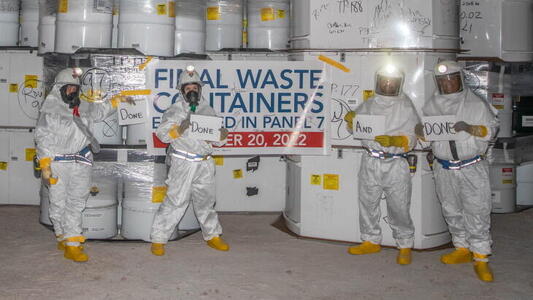 The mission of Science & Global Security is to provide scientific and technical analysis in support of policy initiatives in international security, arms control, and disarmament. Indeed, many international security issues have a strong technical component. At the same time, purely technical solutions rarely exist. In most cases, technology serves as a tool that opens space for political decisions, compromises, and agreements. The opposite is also true--political environment can shape our understanding of the role of technology and expand (or narrow) the range of technical solutions that can be implemented in practice. This interaction is what makes the technical analysis of international security issues both important and challenging. This challenge is illustrated by the two papers published in this issue.
The mission of Science & Global Security is to provide scientific and technical analysis in support of policy initiatives in international security, arms control, and disarmament. Indeed, many international security issues have a strong technical component. At the same time, purely technical solutions rarely exist. In most cases, technology serves as a tool that opens space for political decisions, compromises, and agreements. The opposite is also true--political environment can shape our understanding of the role of technology and expand (or narrow) the range of technical solutions that can be implemented in practice. This interaction is what makes the technical analysis of international security issues both important and challenging. This challenge is illustrated by the two papers published in this issue.
In the opening article of the issue, "Computational Fluid Dynamics Analysis of the Infrared Emission from a Generic Hypersonic Glide Vehicle" by Graham V. Candler and Ivett A. Leyva, the authors address the visibility of a glide vehicle to space-based infrared sensors using computational fluid dynamics to model the vehicle's flight. This seemingly narrow technical issue is quite important for assessing the potential role of hypersonic gliders as a weapon delivery system.
The relative difficulty of detecting these gliders by the existing early-warning systems is often presented as their distinct advantage. It also provides arguments for proponents of developing new tools to detect ballistic missiles and gliders from space. Overall, it contributes to the notion that hypersonic glide vehicles have a qualitative advantage over traditional ballistic missiles. This notion, of course, has been contested on technical as well as political grounds. For example, in a 2020 Science & Global Security paper "Modelling the Performance of Hypersonic Boost-Glide Missiles" Cameron L. Tracy and David Wright argued that in most cases the capabilities of hypersonic gliders are comparable to those of traditional ballistic missiles. One element of that analysis examined the visibility of hypersonic gliders and concluded that the detection is well within the capability of the existing space-based sensors.
The computational fluid dynamics analysis performed by Candler and Leyva suggests that the infrared emissions of a hypersonic glide vehicle during the glide phase would be lower than those predicted by the model used by Tracy and Wright. As a result, the vehicle might not be reliably detected by the older DSP early-warning satellites. However, sensors of the newer SBIRS satellites would still be able to see the glider. The computational fluid dynamics analysis also provides some important insights into the parameters of the glider's flight and challenges some of the assumptions made in the earlier analysis.
The editors invited Tracy and Wright to submit a response which will be published in an upcoming issue of the journal. An open discussion of technical aspects of an issue is the most reliable way of getting better understanding of its political implications.
In "Mining for the Bomb: The Vulnerability of Buried Plutonium to Clandestine Recovery" Cameron Tracy and Rodney Ewing examine various aspects of an issue that is at the center of the effort to eliminate military usable fissile materials. In the 1990s, the United States and Russia each committed to dispose of 34 metric tons of weapon-grade plutonium. Disposal, however, proved to be a difficult technical and political task. The technical aspects of the problem have been extensively covered by Science & Global Security since its inception more than thirty years ago.
Experts in the two countries have always disagreed on what method of disposition can be considered irreversible. Russia has long maintained that burying plutonium underground does not provide a sufficient barrier to recover the material. The authors show that this argument is technically correct, and that plutonium is indeed vulnerable to clandestine recovery using existing engineering techniques. They also demonstrate that the nature of disagreement, which eventually contributed to the collapse of the bilateral plutonium disposition agreement, is not purely technical.
The different approaches to disposition reflect the different technological frames that exist in Russia and the United States. While Russian experts consider plutonium a valuable resource, in the United States plutonium is treated as waste. Any solution to the plutonium disposition problem must recognize these differences and take them fully into account. One can also add that these technological frames are embedded in a larger political framework. There are examples in the history of U.S.-Russian arms control where a favorable political environment made it possible to find solutions to difficult technical problems. The authors of the article offer some ideas that can help address concerns about the potential recovery of buried plutonium.
